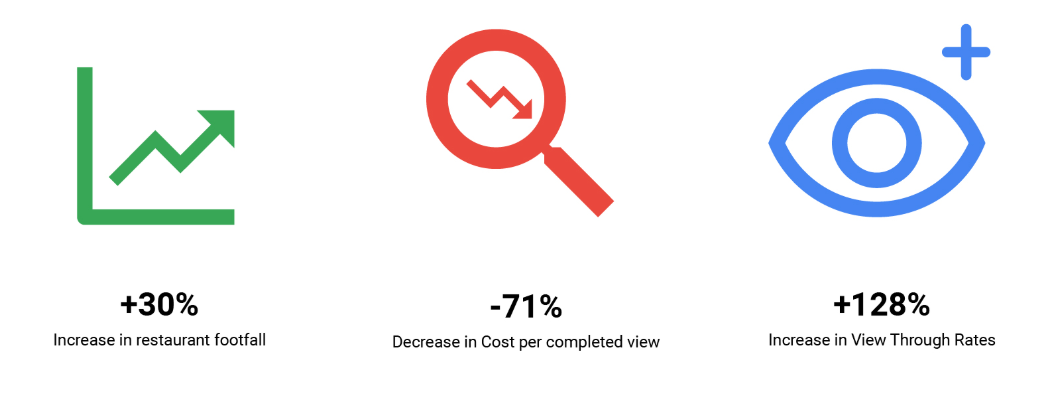Throughout the digital era, marketers have used video advertising for upper-funnel goals, building an emotional connection with their consumers. It’s understood that the sight, sound and motion of video are key to building brand equity among an audience - but does video have what it takes to drive lower-funnel metrics and actually get hungry consumers into restaurants?
A recent marketing push by Subway proved this to be both possible and highly effective. Teaming up with their agency Essence, Subway launched their brand new limited time offer sandwich, the Rotisserie Flavored Chicken. Using a mixture of YouTube and Display advertising, Subway was able to raise product awareness and successfully measure an increase in restaurant visits in just two weeks.

The results were outstanding, with View Through Rates rates increasing by 128% and Cost Per Completed View down by 71%. Subway restaurant footfall increased by a whopping 30% around Germany, as measured through Google Store Visits data.
How the campaign worked:
Subway knew reaching the right consumer at the right time was paramount to driving them to restaurants. Keen to limit the amount of media waste, the campaign used custom affinity audiences to build substantive reach among an audience that would most resonate with the product and brand. Using signals gathered from search, map locations and apps, the brand was able to speak directly to an audience who were in the mood for Subway at that very moment.
Armed with the insight that the German market perceived Subway to be the “healthy alternative” to their fast food competitors, the creative idea was to show the exceptional taste and freshness of this new premium sandwich. First, a 20 second TrueView spot was used to anchor the campaign and build awareness and familiarity among the custom audience. Viewers of the anchor video were then retargeted through a series of display and social banners as well as bumper ads on YouTube.
With the focus on driving restaurant visits, Subway used Google Store Visit Data to effectively measure the impact their media had on offline footfall. Store Visits which is based on anonymous, aggregated statistics measured an increase of 30% in customers who had watched the ad and visited a Subway restaurant near them.
“With limited time offer campaigns, the goal is to achieve high impact in a short amount of time. Being able to customize our audience to maximize reach and then successfully measure the offline impact through Google Store Visit Data was the key to an effective 2 week campaign”
- Christoph Kuschka, Digital Communication Consultant, Essence Global
What does this mean for your brand?
For many brands converting online consumers into offline customers can seem like a daunting task, but Subway have proven it’s possible - and straightforward. Here are a few lessons to consider when thinking about online-to-offline video campaigns.
1. Find your most attentive audience. Driving consumers into physical stores is tough, but finding and focusing on your most valuable audience is key to maximising reach, driving costs down and footfall up. Use all the tools at your disposal and pull insights from other touchpoints to build your attentive audience.
2. Use the right format at the right times. Consumers are constantly bombarded with messages: help your campaign stand out by serving the right ad at the right time, and in the right format. Experiment with longer and shorter format content each achieving different goals through the consumer journey.
3. Measurement starts at the beginning. Too often is measurement an afterthought for brands, especially when measuring online to offline. Clearly define objectives at the beginning of a campaign and set up the appropriate tools and frameworks to measure offline success of online campaigns.




